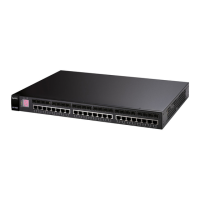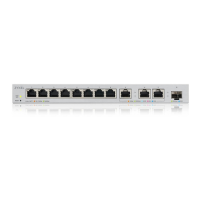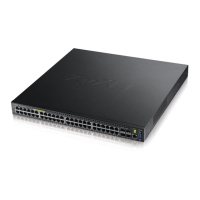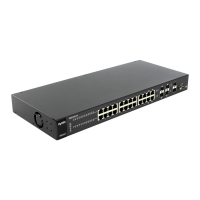Chapter 9 VLAN
XGS4600 Series User’s Guide
130
9.7 Configure VLAN Port Settings
Use this screen to configure the static VLAN (IEEE 802.1Q) settings on a port. Click the VLAN Port Setup link
in the VLAN Configuration screen.
Port The port number identifies the port you are configuring. In stacking mode, the first number
represents the slot ID and the second one is the port number. Please note that the default
stacking ports (the last two ports of your Switch) cannot be configured. They are reserved for
stacking only.
* Settings in this row apply to all ports.
Use this row only if you want to make some settings the same for all ports. Use this row first to set
the common settings and then make adjustments on a port-by-port basis.
Note: Changes in this row are copied to all the ports as soon as you make them.
Control Select Normal for the port to dynamically join this VLAN group using GVRP. This is the default
selection.
Select Fixed for the port to be a permanent member of this VLAN group.
Select Forbidden if you want to prohibit the port from joining this VLAN group.
Tagging Select TX Tagging if you want the port to tag all outgoing frames transmitted with this VLAN
Group ID.
Add Click this to create a new entry or to update an existing one.
This saves your changes to the Switch’s run-time memory. The Switch loses these changes if it is
turned off or loses power, so use the Save link on the top navigation panel to save your changes
to the non-volatile memory when you are done configuring.
Cancel Click Cancel to begin configuring this screen afresh.
Clear Click Clear to start configuring the screen again.
VID This field displays the ID number of the VLAN group. Click the number to edit the VLAN settings.
Active This field indicates whether the VLAN settings are enabled (Yes) or disabled (No).
Name This field displays the descriptive name for this VLAN group.
VLAN Type This field displays the Normal or Private (Primary, Isolated or Community) type VLAN configured
in the top part of this screen.
Association
VLAN List
This field displays which secondary private VLANs are associated with a primary private VLAN
configured in the top part of this screen.
Select an entry’s check box to select a specific entry. Otherwise, select the check box in the
table heading row to select all entries.
Delete Click Delete to remove the selected entry from the summary table.
Cancel Click Cancel to clear the check boxes.
Table 46 Advanced Application > VLAN > VLAN Configuration > Static VLAN Setup (continued)
LABEL DESCRIPTION
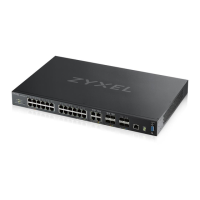
